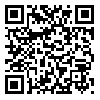BibTeX | RIS | EndNote | Medlars | ProCite | Reference Manager | RefWorks
Send citation to:
URL: http://jha.iums.ac.ir/article-1-1807-en.html
2- Iran University of Medical Sciences
3- School of Public Health, Tehran University of Medical Sciences ,
4- School of Public Health, Tehran University of Medical Sciences
Introduction: Catastrophic health expenditures is an index to evaluate the equity of health financing in different countries. This study investigates the catastrophic health expenditures and it’s determinants among the household residents of Zabol.
Methods: This study was conducted in 2013-2014, using World Health Organization catastrophic health expenditure questionnaire. Cluster sampling and household classification.methods were applied. Logistic and Probit regression model was used to investigate the determinants of catastrophic health expenditure. Data were analyzed by Stata.12.0.
Results: Approximately 20.6 percent of household faced catastrophic health expenses and most of it belonged to the second 8% quintile. The results show that among variables, education of the head of the household and medical expenditure have significantly affected the probability of catastrophic expenditure. In this study, having health insurance supposedly did not play a significant role as a main factor in the reduction of catastrophic health expenditure.
Conclusion: High exposure to catastrophic expenditures among studied households, despite their 88 percent of them to access to basic health insurances, shows it's inefficiency in covering medical expenditures of insured households. It is on health policy makers to focus on factors that affecting the incidence of the catastrophic health expenditures and also do effective actions in terms of expanding health expenditures coverage specially medicine expenditures and effective prepayment initiatives to protect households from catastrophic health expenditures.
Received: 2015/02/16 | Accepted: 2015/11/16 | Published: 2015/11/16
| Rights and permissions | |
 |
This work is licensed under a Creative Commons Attribution-NonCommercial 4.0 International License. |





